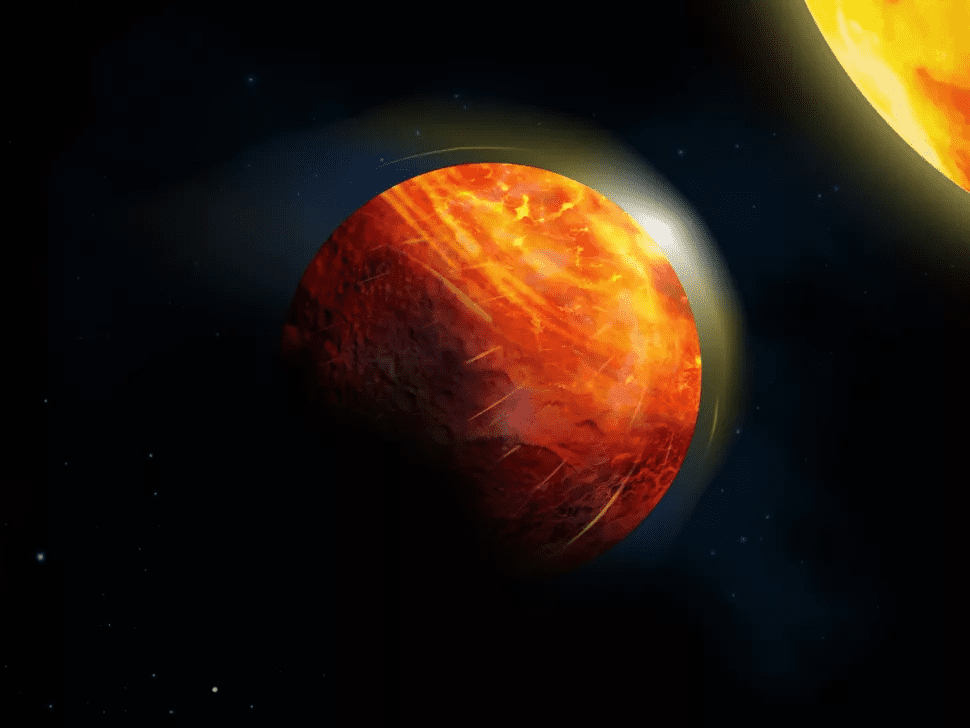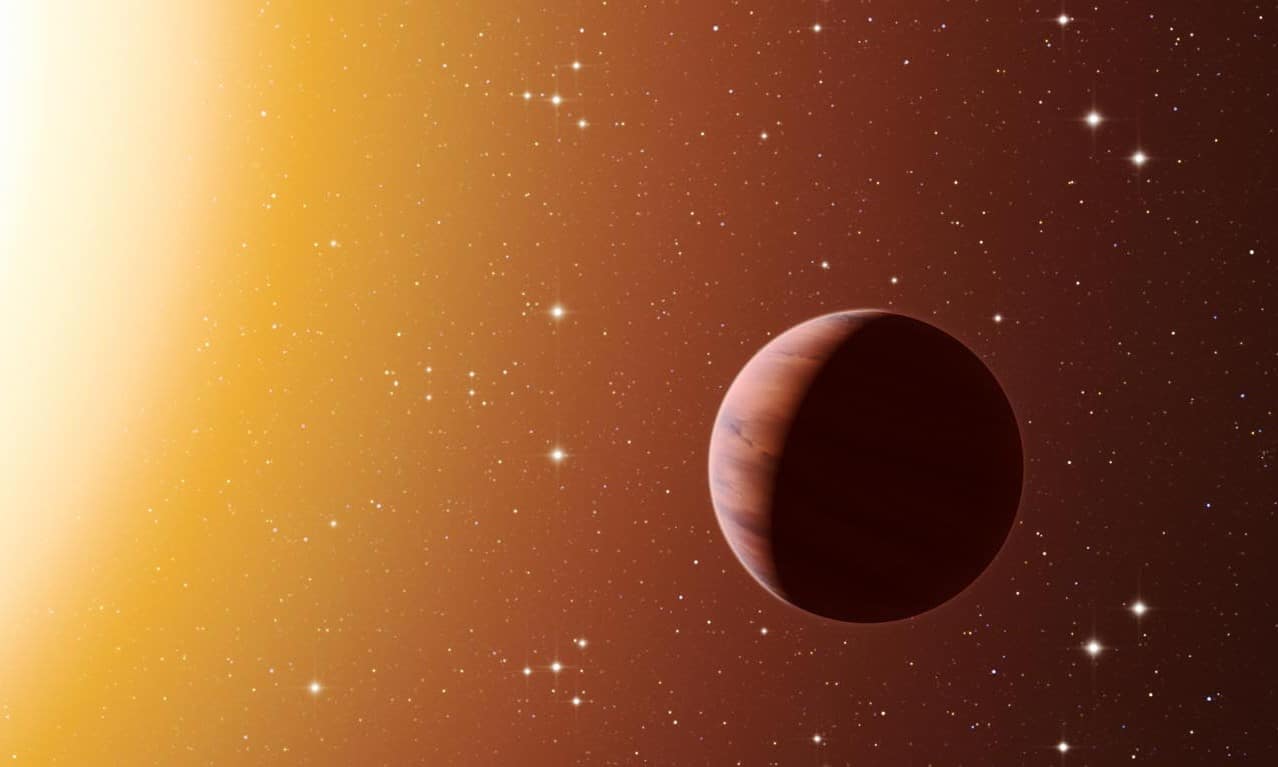
Signatures of ionized calcium in the upper atmosphere of an ultra-hot, Jupiter-like exoplanet have been found by international team of astronomers led by Emily Deibert at the University of Toronto. The researchers say that the ions could have only formed if the upper atmosphere of the exoplanet WASP-76b is either far hotter or far windier than previously thought. The discovery is the first result of the Exoplanets with Gemini Spectroscopy (ExoGemS) survey. Further insights into the origins of the calcium ions could soon be gained through future observations of the atmospheres of other exoplanets – which are planets orbiting stars other than the Sun.
First discovered in 2016, WASP-76b has about the same mass as Jupiter and has a radius almost twice as large. It completes a full orbit of its star in just 1.8 days and this stellar transit is visible from Earth, making WASP-76b an ideal candidate for atmospheric analysis. Previous studies have revealed that the exoplanet has one of the most exotic atmospheres known to astronomers.
Through several years of close observation, astronomers now widely agree that the planet is tidally locked with its star: leaving one side in permanent daytime, with temperatures reaching 2400 °C. Such an environment would vaporize iron, which would then condense in the upper atmosphere and fall as liquid rain. Meanwhile, the other side exists in permanent night, at temperatures of roughly 1300 °C.
Now, WASP-76b has become the first subject of the ExoGemS survey, which uses the Gemini North Telescope on Mauna Kea in Hawaii. ExoGemS aims to probe the atmospheres of over 40 exoplanets, spanning a wide range of masses and temperatures.
Triplet of peaks
As they analysed the absorption spectrum of light from WASP-76b, Deibert and colleagues found the signatures of several different ionized elements in the exoplanet’s atmosphere: including sodium, lithium, and potassium. The most interesting result was a particular triplet of absorption peaks, which suggests an abundance of ionized calcium in WASP-76b’s upper atmosphere. Intriguingly, these ions can only form in very extreme planetary environments.

‘Hell-like’ exoplanet experiences rocky rain and supersonic wind
Through their analysis, the astronomers narrowed down the possible origins of these ions to two possible causes: either temperatures in the exoplanet’s upper atmosphere are far higher than astronomers previously thought; or the atmosphere harbours extremely strong winds. To gain further insights into these possible origins, Deibert and colleagues will now search for similar signatures of ionized calcium on other exoplanets that will be studied by the ExoGemS survey.
By analysing a large sample of alien worlds, the astronomers aim to learn far more about the chemical compositions of their atmospheres. Other factors including wind and rotation patterns; cloud formation mechanisms; and the rates at which their atmospheric gases escape will also be analysed. By studying these features on planets with widely varying masses and temperatures, the team hopes to gain a better understanding of how exotic planetary atmospheres form and evolve.
The observations are described in The Astrophysical Journal Letters.
